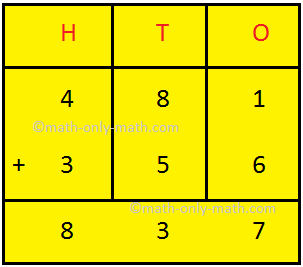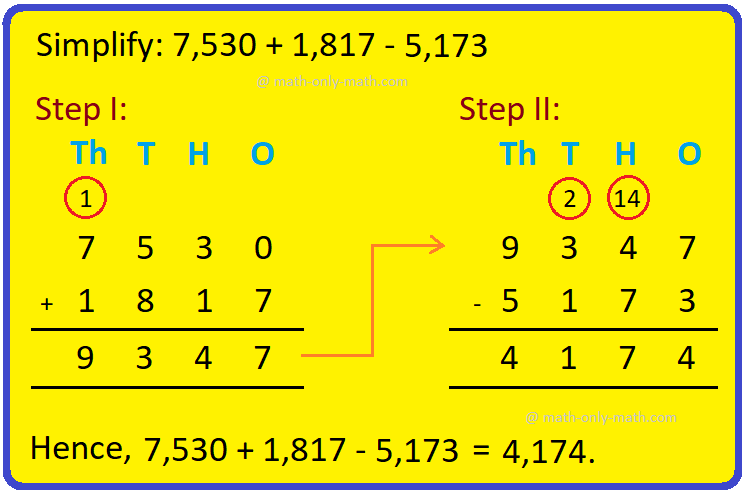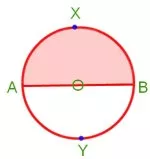Subscribe to our YouTube channel for the latest videos, updates, and tips.
Home | About Us | Contact Us | Privacy | Math Blog
Rational Numbers in Terminating and Non-Terminating Decimals
Integers are positive and negative whole numbers including zero, such as {-3, -2, -1, 0, 1, 2, 3}.
When these whole numbers are written in the form of ratio of whole numbers it is known as rational numbers. So, rational numbers can be positive, negative or zero. So, a rational number can be expressed in the form of p/q where ‘p’ and ‘q’ are integers and ‘q’ is not equal to zero.
Rational Numbers in Decimal Fractions:
Rational numbers can be expressed in the form of decimal fractions. These rational numbers when converted into decimal fractions can be both terminating and non-terminating decimals.
Terminating decimals: Terminating decimals are those numbers which come to an end after few repetitions after decimal point.
Example: 0.5, 2.456, 123.456, etc. are all examples of terminating decimals.
Non terminating decimals: Non terminating decimals are those which keep on continuing after decimal point (i.e. they go on forever). They don’t come to end or if they do it is after a long interval.
For example:
π = (3.141592653589793238462643383279502884197169399375105820974.....) is an example of non terminating decimal as it keeps on continuing after decimal point.
If a rational number (≠ integer) can be expressed in the form p2n×5m, where p ∈ Z, n ∈ W and m ∈ W, the rational number will be a terminating decimal. Otherwise, the rational number will be a nonterminating, recurring decimal.
For example:
(i) 58 = 523×50. So, 58 is a terminating decimal.
(ii) 91280 = 928×51. So, 91280 is a terminating decimal.
(iii) 445 = 432×51. Since it is not in the form \(\frac{p}{2^{n} × 5^{m}}\), So, 445 is a non-terminating, recurring decimal.
For example let us take the cases of conversion of rational numbers to terminating decimal fractions:
(i) 12 is a rational fraction of form pq. When this rational fraction is converted to decimal it becomes 0.5, which is a terminating decimal fraction.
(ii) 125 is a rational fraction of form pq. When this rational fraction is converted to decimal fraction it becomes 0.04, which is also an example of terminating decimal fraction.
(iii) 2125 is a rational fraction form pq. When this rational fraction is converted to decimal fraction it becomes 0.016, which is an example of terminating decimal fraction.
Now let us have a look at conversion of rational numbers to non terminating decimals:
(i) 13 is a rational fraction of form pq. When we convert this rational fraction into decimal, it becomes 0.333333… which is a non terminating decimal.
(ii) 17 is a rational fraction of form pq. When we convert this rational fraction into decimal, it becomes 0.1428571428571… which is a non terminating decimal.
(iii) 56 is a rational fraction of form pq. When this is converted to decimal number it becomes 0.8333333… which is a non terminating decimal fraction.
Irrational Numbers:
We have different types of numbers in our number system such as whole numbers, real numbers, rational numbers, etc. Apart from these number systems we have Irrational Numbers. Irrational numbers are those which do not terminate and have no repeating pattern. Mr. Pythagoras was the first person to prove a number as irrational number. We know that all square roots of integers that don’t come out evenly are irrational. Another best example of an irrational number is ‘pi’ (ratio of circle’s circumference to its diameter).
π = (3.141592653589793238462643383279502884197169399375105820974.....)
First three hundred digits of ‘pi’ are non-repeating and non-terminating. So, we can say that ‘pi’ is an irrational number.
Rational Numbers
Decimal Representation of Rational Numbers
Rational Numbers in Terminating and Non-Terminating Decimals
Recurring Decimals as Rational Numbers
Laws of Algebra for Rational Numbers
Comparison between Two Rational Numbers
Rational Numbers Between Two Unequal Rational Numbers
Representation of Rational Numbers on Number Line
Problems on Rational numbers as Decimal Numbers
Problems Based On Recurring Decimals as Rational Numbers
Problems on Comparison Between Rational Numbers
Problems on Representation of Rational Numbers on Number Line
Worksheet on Comparison between Rational Numbers
Worksheet on Representation of Rational Numbers on the Number Line
9th Grade Math
From Express Rational Numbers in Terminating and Non-Terminating Decimals to HOME PAGE
Didn't find what you were looking for? Or want to know more information about Math Only Math. Use this Google Search to find what you need.
Recent Articles
-
5th Grade Circle Worksheet | Free Worksheet with Answer |Practice Math
Jul 11, 25 02:14 PM
In 5th Grade Circle Worksheet you will get different types of questions on parts of a circle, relation between radius and diameter, interior of a circle, exterior of a circle and construction of circl… -
Construction of a Circle | Working Rules | Step-by-step Explanation |
Jul 09, 25 01:29 AM
Construction of a Circle when the length of its Radius is given. Working Rules | Step I: Open the compass such that its pointer be put on initial point (i.e. O) of ruler / scale and the pencil-end be… -
Combination of Addition and Subtraction | Mixed Addition & Subtraction
Jul 08, 25 02:32 PM
We will discuss here about the combination of addition and subtraction. The rules which can be used to solve the sums involving addition (+) and subtraction (-) together are: I: First add -
Addition & Subtraction Together |Combination of addition & subtraction
Jul 08, 25 02:23 PM
We will solve the different types of problems involving addition and subtraction together. To show the problem involving both addition and subtraction, we first group all the numbers with ‘+’ and… -
5th Grade Circle | Radius, Interior and Exterior of a Circle|Worksheet
Jul 08, 25 09:55 AM
A circle is the set of all those point in a plane whose distance from a fixed point remains constant. The fixed point is called the centre of the circle and the constant distance is known






New! Comments
Have your say about what you just read! Leave me a comment in the box below. Ask a Question or Answer a Question.